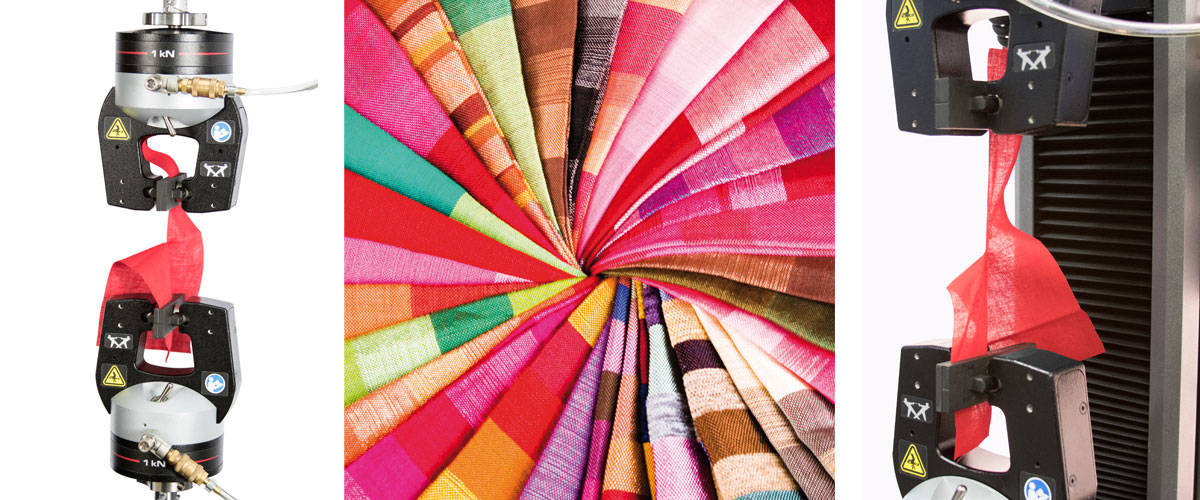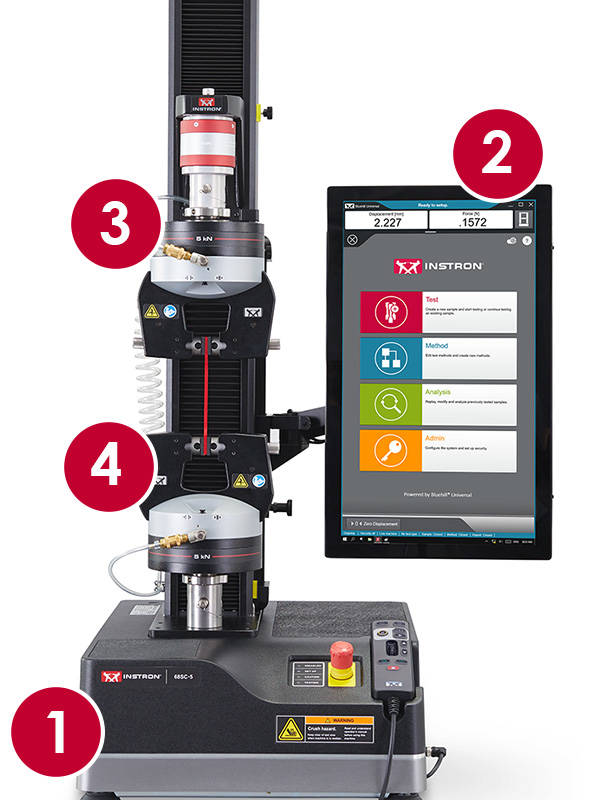ASTM D2261: Tearing Strength of Fabrics

Originally introduced in 1964, ASTM D2261 was most recently updated in 2013 and specifies the method for tear testing of fabrics by the tongue (single rip) procedure to measure the tearing strength of the fabric. This test method applies to most textile fabrics, including those that are treated and untreated, woven, knitted, or unwoven. In this test method, a cut is made in a rectangular specimen, starting a tear. The two sides of the tear are then pulled until failure, with the resulting data reflecting the strength of the yarns, fiber bonds, and fiber interlocks, as well as their resistance to tearing.
Testing System
This standard requires a test frame moving at a constant rate of extension. As with most textiles testing, data rate is an important consideration, and to consistently and accurately measure the tear strength of your material it is important to remember that the data sampling rate needs to be high enough that the test peaks and troughs are adequately captured. Because of this we recommend using a higher tier materials testing system such as Instron's 6800 Series, which offers a 5 kHz data acquisition rate to make sure you never miss a test event. For most textile fabrics testing to ASTM D2261, a single column frame is appropriate as the loads rarely go above 5 kN. Instron’s Bluehill® Universal testing software offers a pre-built test method for ASTM D2261 to simplify your testing and ensure compliance with the standard.
| ASTM D2261 Test Setup | |
|---|---|
| 1) | 68SC-5 Universal Testing System |
| 2) | Bluehill Universal Software |
| 3) | 2580 Series Load Cell |
| 4) | 2712-045 Pneumatic Side-Action Grips |

Grips and Specimen Preparation
Instron's pneumatic side action grips with rubber faces are well suited to gripping nearly all types of fabric specimens for this test while maintaining high throughput. The specimen can be tested wet or without wetting as well for this standard, and jaw faces must be a minimum of 75mm wide by 25 mm tall. A rectangular specimen is used for this test and must be prepared for by making a cut in it, forming two “tongues". One tongue is placed in the upper grip jaw and one tongue is placed in the lower grip jaw. As the test runs, the jaws move apart and the fabric tears along the pre-cut segment.
Pneumatic side-action grips are the recommended gripping solution due to their ability to send constant pressure to the grips, aiding in the ease of use and repeatability of testing. Users can also easily fine-tune the gripping pressure to avoid jaw breaks or slippage. ASTM D2261 calls out utilizing either rubber coated or serrated jaw faces for testing, but this will primarily depend on the type of fabric being tested. In some cases, serrated jaw faces may be too aggressive and lead to premature jaw breaks. On the other hand, rubber jaw faces can sometimes lead to unwanted specimen extrusion or slippage during testing due to their permeability. The standard also calls out the ability to use medium grit emery cloth for some materials as an additional way to help prevent slippage.



